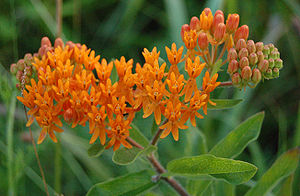Botanical Name:Liatris spicata
Family: Asteraceae
Kingdom: Plantae
Division: Magnoliophyta
Class: Magnoliopsida
Order: Asterales
Genus: Liatris
Species: Liatris spicata
Synonyms: ‘Goblin’
Common Name:Gayfeather, Blazing Star, Dense blazing star, Spiked Blazing Star, Button Snakewot, Gayfeather, Spiked Gayfeather,
Habitat: Liatris spicata is native to Eastern N. America – Pennsylvania and New Jersey to Wisconsin, south to Florida and Louisiana.Most open areas of North America east of the Mississippi; Canada to Florida and Mexico. It grows in meadows, borders of marshes, savannahs, damp slopes etc. Poor dry ridges.
Description:
Liatris spicata is a perennial plant, growing to 0.6 m (2ft) by 0.3 m (1ft in) at a medium rate.
Flower Color: Showy spikes on many tiny purple flowers
Plant Type: Perennial. Returns each spring from same roots, forming expanding clump. Blooms second spring from seed.
Flower Type: Tall spike of clustered tiny flowers
Bloom Time: Mid-season

You may click to see the picture
Cultivation :
Soil preference: Needs loose fast-draining soil.
Sun/Shade: Needs full sun.
Moisture Requirements: Average moisture, well-drained.
Instructions: This valued perennial takes some time. From seed, it is quite easy, as long as its native conditions of gritty, loose soil is there. If soil is heavy, it will take longer, since a bulbous root must develop.
This cultivar of a U.S. prairie plant offers the garden spikes of purple, fuzzy-looking flowers that open from the top down on plants up to 2 feet tall and 18 inches wide. The show starts in late summer and attracts butterflies and bees. Grow it in a moist meadow or border. The flowers are also beautiful in a vase.
Propagation:
Seed – best sown as soon as it is ripe in autumn in a greenhouse[200]. Sow stored seed as soon as possible in the year in a greenhouse. Prick out the seedlings into individual pots when they are large enough to handle and grow the plants on in the greenhouse for their first year. Plant them out into their permanent positions in early summer. Division in spring[1]. Larger clumps can be replanted direct into their permanent positions, though it is best to pot up smaller clumps and grow them on in a cold frame until they are rooting well. Plant them out in the spring. Basal cuttings taken in spring as growth commences. Harvest the shoots when they are about 10cm long with plenty of underground stem. Pot them up into individual pots and keep them in light shade in a cold frame or greenhouse until they are rooting well. Plant them out in the summer.
Medicinal Uses
Anodyne; Antibacterial; Astringent; Carminative; Diaphoretic; Diuretic; Emmenagogue; Expectorant; Stimulant; Tonic; VD.
The leaves and root are anodyne, antibacterial, astringent, carminative, diaphoretic, diuretic, emmenagogue, expectorant, stimulant and tonic. The plant is said to be extremely efficacious when used as a local application in the treatment of sore throats and gonorrhoea. It is also used in treating kidney diseases. The leaves are harvested in the summer, the roots in the autumn. Both can be used fresh or dried.
Liatris stimulates the stomach mildly, and is used as a tonic and antispasmodic, relieving colic and soothing irritation.
Other Uses:...Pot-pourri; Repellent….The aromatic leaves and roots are added to pot-pourri. The leaves and the roots are added to various insect-repellent herbal mixtures
Known Hazards: Although we have no records of toxicity for this plant, one record says that the leaves contain coumarins. These have an anti-clotting effect on the blood and can prevent natural clotting of the blood when there is a cut.
Disclaimer:The information presented herein is intended for educational purposes only. Individual results may vary, and before using any supplements, it is always advisable to consult with your own health care provider.
Resources:
http://www.gardenstew.com/plantstew/37944
http://wildflowerinformation.org/Wildflower.asp?ID=80&gclid=CIaRprjzupsCFRIeDQodlWRSAQ
http://www.finegardening.com/plantguide/liatris-spicata-kobold.aspx
http://www.pfaf.org/database/plants.php?Liatris+spicata
http://www.piam.com/mms_garden/plants.html
Related articles by Zemanta
- Digitalis ambigua(Perennial Foxglove) (findmeacure.com)















































